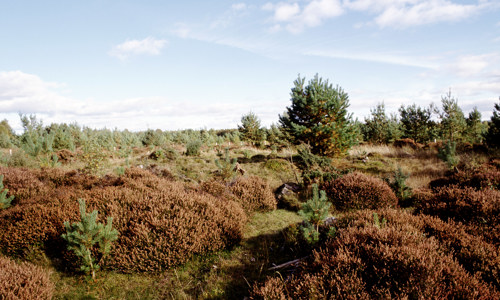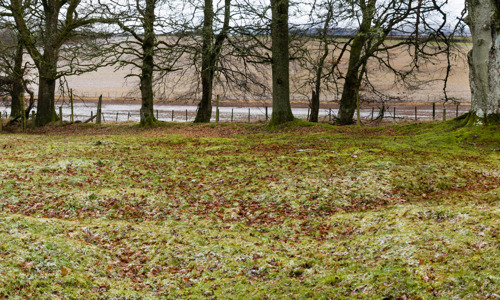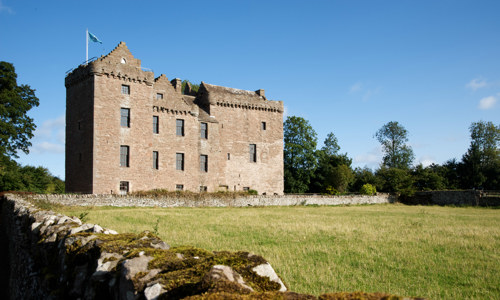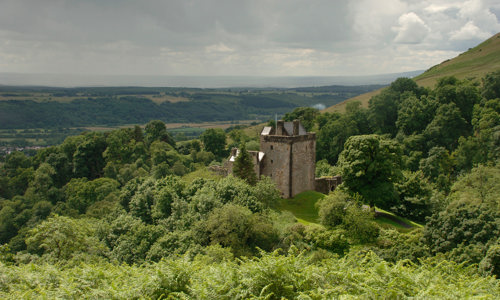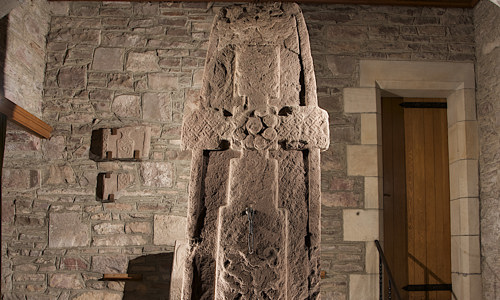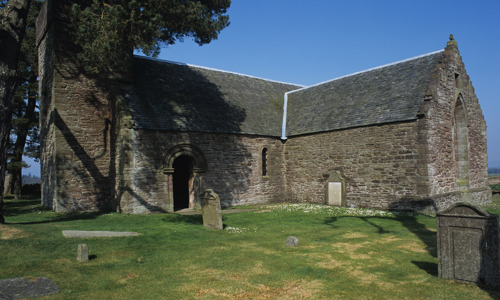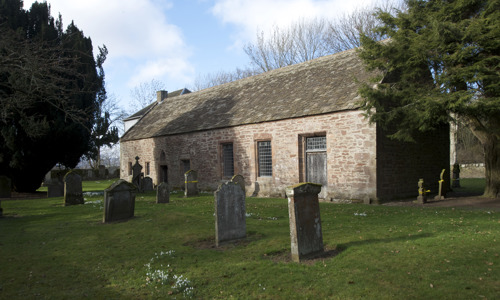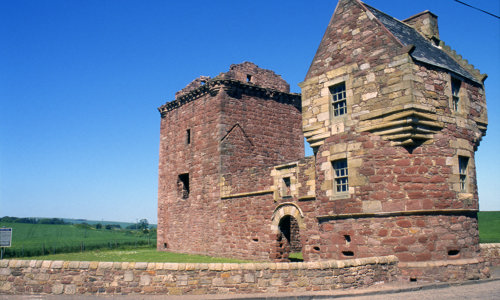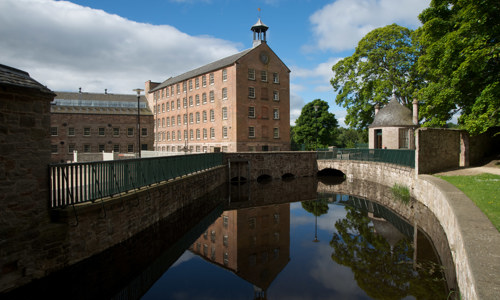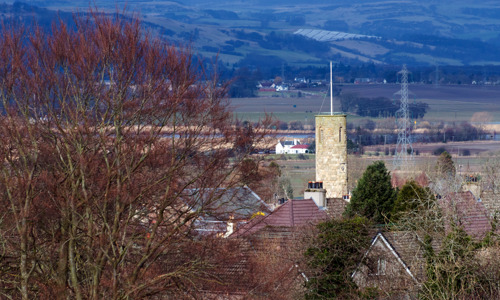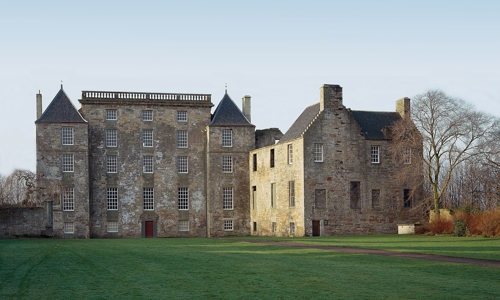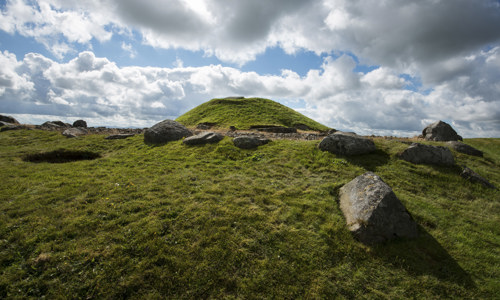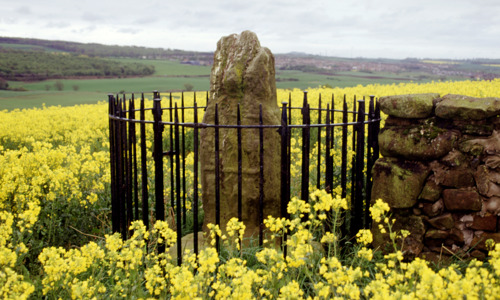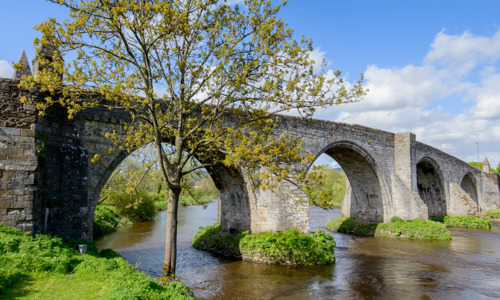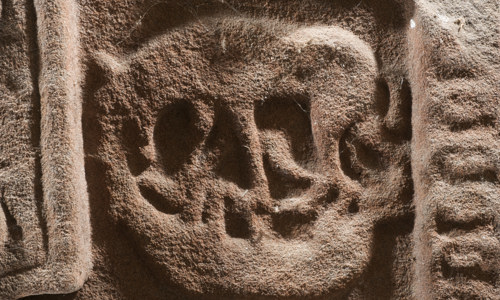History
St Serf’s Church was probably built around 1200. Not long before that, the local parish had been granted to the newly founded Inchaffray Priory.
The church had a rectangular nave, with a narrower chancel to its east, and a square bell tower to its west.
Clues to the church’s great age include:
- the tower itself – the most obvious pointer to its age
- the Romanesque archway at the east base of the tower, with its finely carved scalloped decoration
- part of the original round-headed doorway into the north side of the nave
Post-Reformation kirk
In 1391, the Rollo family of Duncrub became the local landowners. After the Reformation, members of the family probably altered St Serf’s so it could be used for the new form of worship.
The pulpit was moved to a central location, where it would be visible to all members of the congregation. In 1687, a laird’s loft was added at the east end of the kirk, for the private use of the Rollos.
In 1810, a new aisle with an upper gallery was added, increasing St Serf’s capacity to 1,000 people. The result is a fine example of a T-plan Reformed kirk. The three arms of the interior directed attention towards the central pulpit, where the preacher stood, and the Lord’s Table, where Holy Communion took place four times a year.
Keeping time
In 1825, Major Howard Drummond of Kelty, Fife presented the large bell in the 800-year-old bell tower. It was given “in token of his attachment to his native parish, and of his zeal to promote religious, industrious and early habits among the parishioners”.
The present clock was purchased by public subscription in 1890.
Still standing
The extremely rare and impressive Dupplin Cross was probably carved around 800. It once stood 3 miles away, near the palace of the Pictish kings at Forteviot.
The Latin inscription links the cross to King Constantine, son of Fergus. Constantine died in 820, so this may date the cross roughly. It was during Constantine’s reign that the kingdoms of the Picts and the Scots began to merge.
Symbol of power
Free-standing crosses were more common in Ireland, western Scotland and Northumbria than in eastern and central Scotland. The Dupplin Cross is the only complete example to survive in Pictish territory.
Its style and content would have sent out important messages to its Pictish viewers. Constantine’s desire to have his political authority and links with the church recognised would have come across loud and clear.
The carvings skilfully place images of contemporary royal authority alongside those of the biblical King David. David – writer of psalms and protector of his people – is shown as a warrior king and saviour. The proud horseman with a sword or sceptre, on the front (east) face, is almost certainly Constantine, with his warriors.
A rare work of art
The 3m-high cross, carved from local sandstone, is richly decorated on all four faces. It combines innovations by the Pictish sculptor with external sources of inspiration.
The head of the cross, with its prominent central boss and vine-scroll filling the arms, is inspired by Northumbrian art. But the double-curve of the arms was probably influenced by Iona.
The figures are purely Pictish, however:
- Constantine, on his horse, has a prominent head and moustache to show his authority
- the four young warriors below the king have plain clothing and no moustaches
- the hunting dogs in full chase are common to Pictish sculpture


